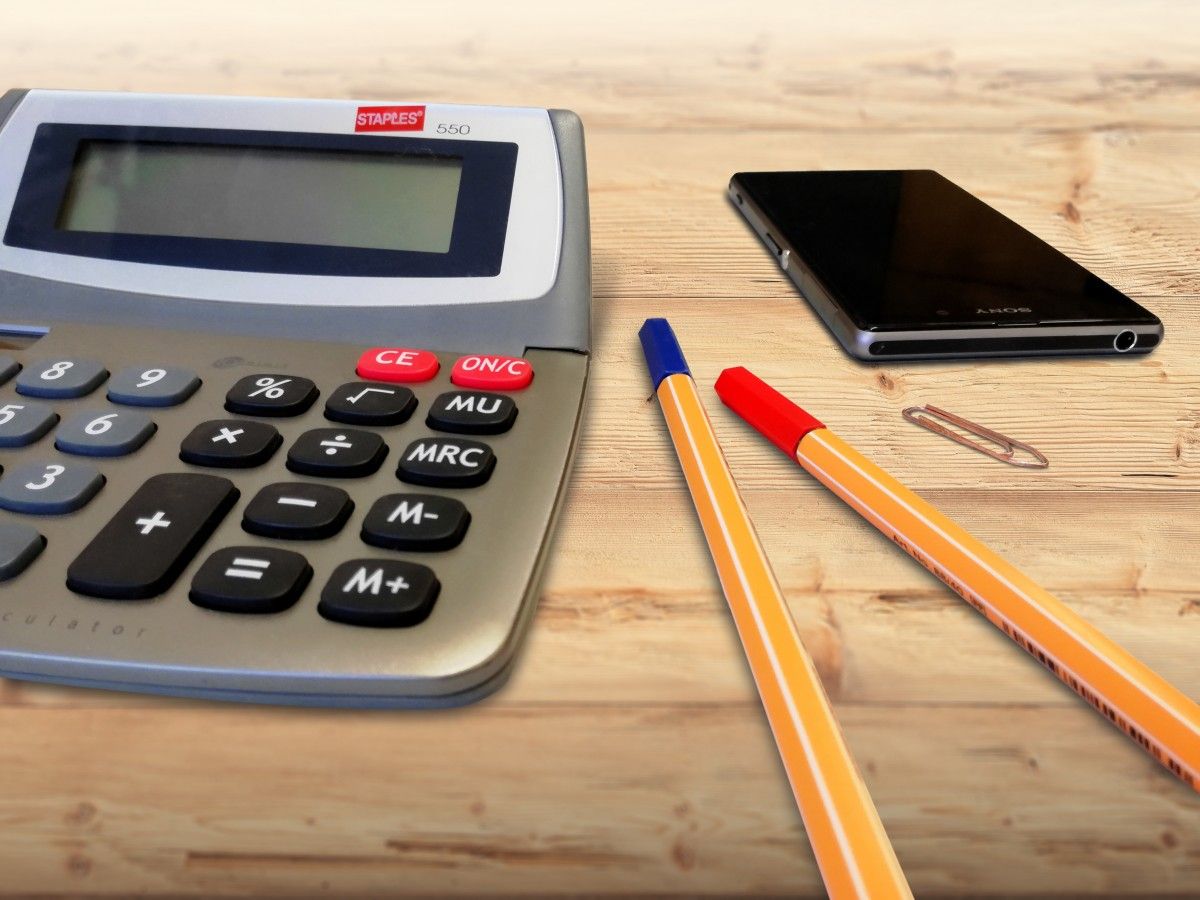In the realm of digital marketing services, unpaid invoices can significantly disrupt business operations and financial stability. This article outlines a strategic approach to navigate and recover funds from unpaid invoices using a structured three-phase recovery system. Each phase encompasses specific actions and escalations, from initial recovery efforts to potential litigation. Understanding these steps and the associated pricing structure for debt collection services is crucial for digital marketing firms facing delinquent clients.
Key Takeaways
- A three-phase Recovery System is employed to maximize the chances of recovering unpaid invoices from delinquent clients in the digital marketing sector.
- Immediate and persistent recovery efforts, including skip-tracing and various communication methods, are initiated within 24 hours of account placement.
- Legal intervention is considered when initial recovery attempts fail, involving attorney-drafted correspondence and the assessment of the debtor’s ability to pay.
- The decision to litigate is based on a thorough investigation of the debtor’s assets and the likelihood of recovery, with upfront costs communicated beforehand.
- The pricing structure for debt collection services is competitive and varies depending on claim age, volume, and whether the account requires legal action.
Understanding the Unpaid Invoices Challenge in Digital Marketing
The Impact of Unpaid Invoices on Cash Flow
When we talk about the lifeblood of our business, we’re referring to cash flow. Unpaid invoices are like clogs in our financial arteries, disrupting the smooth flow of cash that keeps our operations running. Managing unpaid invoices is not just about persistence; it’s about strategy.
Cash flow is the net amount of cash moving in and out of a business. When clients delay or default on payments, it puts a strain on our resources. We must then divert funds from other areas, or worse, halt certain operations, which can lead to a domino effect of financial setbacks.
Our three-phase Recovery System is designed to tackle these challenges head-on, ensuring that funds are recovered effectively and our business remains on solid ground.
Here’s a snapshot of how unpaid invoices can affect our cash flow:
- Immediate impact: Operational funds are tied up, limiting our ability to invest in growth or cover daily expenses.
- Long-term effect: Persistent cash flow issues can lead to increased borrowing, higher interest rates, and a damaged credit rating.
- Opportunity cost: Every dollar stuck in unpaid invoices is a missed opportunity for investment or earning interest.
By addressing unpaid invoices promptly and with a clear strategy, we safeguard our business’s financial health and ensure that our digital marketing services continue to thrive.
Legal Considerations in Debt Recovery
When we’re faced with unpaid invoices, the legal route is a path we tread carefully. Navigating the legal landscape requires precision and an understanding of the debtor’s position. We consider the likelihood of asset recovery and the costs involved before recommending litigation. It’s a balance between the potential gain and the financial risk.
Legal action is not a step to be taken lightly. We assess each case on its merits, considering the age of the account and the debtor’s jurisdiction. Here’s a snapshot of our approach:
- Immediate review of the debtor’s assets and financial status
- Calculation of potential recovery against legal costs
- Decision on whether to proceed with legal action or close the case
We’re committed to a transparent process, ensuring you’re informed at every turn. If litigation is advised, you’ll be apprised of all upfront costs. Our aim is to achieve resolution with minimal strain on your resources.
Communication Strategies with Delinquent Clients
When we’re faced with delinquent clients, our approach is both strategic and empathetic. We prioritize clear, consistent communication to pave the way for resolution. It’s not just about sending reminders; it’s about understanding the context behind each unpaid invoice.
- We start with a friendly reminder, acknowledging the oversight could be unintentional.
- Next, we escalate to more formal follow-ups, outlining the consequences of continued non-payment.
- If necessary, we propose a payment plan, offering flexibility while emphasizing the importance of settling the debt.
Our goal is to maintain a professional relationship while firmly asserting the need for payment. We’re not just recovering funds; we’re preserving partnerships.
Remember, managing unpaid invoices is a delicate balance. We employ our three-phase Recovery System to recover funds effectively, ensuring we adapt our strategies to the unique challenges of digital marketing and cross-border fashion apparel trade.
Phase One: Initial Recovery Efforts
Immediate Actions Post-Account Placement
Once we place an account, we hit the ground running. Within 24 hours, our first letter is on its way to the debtor, and our investigative gears are turning. We’re skip-tracing, digging for the best financial and contact information to ensure we’re not chasing ghosts. Our collectors are relentless, armed with phones, emails, and texts, they’re on the debtor’s trail, making daily attempts to secure a resolution.
Persistence is key; we’re talking 30 to 60 days of consistent contact. If the debtor remains elusive or uncooperative, we don’t hesitate to escalate. Phase Two is our next move, where our affiliated attorneys step in, wielding the power of legal letterhead to demand what’s owed.
We’re not just about recovery; we’re about smart, strategic recovery. Every step is calculated, every action tailored to coax payment from even the most stubborn of debtors.
Our pricing structure reflects our commitment to value. Whether it’s a fresh account or one that’s been aging like fine wine, we’ve got a rate that aligns with the effort required. And if legal action is on the table, we’re transparent about the costs—no surprises, just results.
Skip-Tracing and Investigative Techniques
Once we’ve dispatched initial communication, our focus shifts to the heart of skip-tracing. We leave no stone unturned in our quest to locate your debtor. Our investigative techniques are thorough, utilizing the latest databases and resources to unearth the most current financial and contact information available.
We’re relentless in our pursuit, ensuring that every avenue is explored to secure the information we need.
Our process is systematic and persistent. Here’s what you can expect:
- Comprehensive data mining to uncover debtor whereabouts
- Analysis of financial patterns to predict future behavior
- Utilization of advanced technology to track down elusive debtors
Remember, the goal is to recover your funds swiftly and effectively. Our skip-tracing efforts are a critical component of the debt recovery process.
Persistent Contact Attempts and Resolution Strategies
We’re relentless in our pursuit to resolve unpaid invoices. Persistence is key; we make daily contact attempts for the first 30 to 60 days. Our strategy isn’t just about volume—it’s about tactful engagement. We use a mix of phone calls, emails, text messages, and faxes to reach delinquent clients.
We adapt our approach based on the debtor’s response, always aiming for a resolution that benefits both parties.
If these efforts don’t yield results, we don’t hesitate to escalate. Our structured recovery systems are designed to recover funds effectively, ensuring we manage unpaid invoices with precision.
Here’s a snapshot of our initial contact frequency:
- Day 1-15: Daily attempts via multiple channels
- Day 16-30: Alternate day follow-ups
- Day 31-60: Weekly summaries and final notices
Should these steps fail to secure payment, we’re prepared to move to Phase Two, involving legal intervention. Our goal is to avoid this escalation, but we’re fully equipped to proceed if necessary.
Phase Two: Escalation to Legal Intervention
Transitioning the Case to a Local Attorney
When we hit a wall with recovery efforts, it’s time to bring in the legal cavalry. Transitioning to Phase Two involves escalating to legal action with clear criteria and timelines. Local attorneys engage debtors through demand letters and calls, assessing assets and willingness to pay.
Our affiliated attorneys don’t waste a moment. Upon receiving your case:
- They draft a demand letter on law firm letterhead, asserting the seriousness of the situation.
- They begin a series of persistent calls, aiming to reach a resolution.
If these efforts don’t yield results, we’re transparent about the next steps. We’ll discuss the challenges and recommend how to proceed, ensuring you’re informed every step of the way.
Remember, this phase is about applying pressure with precision. It’s not just about sending letters; it’s about strategic engagement, designed to prompt payment or set the stage for further action.
The Role of Attorney-Drafted Correspondence
When we escalate to legal intervention, the attorney-drafted correspondence becomes a pivotal tool. Our affiliated attorneys craft letters that carry the weight of legal authority, signaling to debtors the seriousness of their situation. This often prompts a more immediate response than previous attempts.
- The first letter sets a firm tone, demanding payment.
- Subsequent letters may outline potential legal consequences.
- Each correspondence is tailored to the debtor’s specific circumstances, ensuring relevance and impact.
The shift from our internal recovery efforts to attorney-backed communication marks a critical juncture in the debt recovery process. It’s here that we often see a turn towards resolution.
Our approach aligns with the challenges digital marketing services face with unpaid invoices. As part of our three-phase Recovery System, this step is crucial for effective debt recovery.
Evaluating the Effectiveness of Legal Pressure
Once we’ve escalated to legal pressure, it’s crucial to measure its impact. We look for signs of engagement from the debtor, such as responses to attorney-drafted letters or initiated settlement discussions. It’s a game of patience and persistence, but the response rate to legal communication often serves as a barometer for the debtor’s willingness to resolve the outstanding debt.
The effectiveness of legal pressure is not just about securing payment; it’s about signaling the seriousness of our intent.
If the debtor remains unresponsive, we consider the next steps. Our experience shows that a structured approach, with clear timelines and consequences, yields the best results. Here’s a snapshot of our strategy:
- Review debtor’s reaction to legal correspondence
- Analyze the frequency and quality of communication
- Determine if further legal action is warranted
Our goal is to secure payment efficiently and recover owed amounts, leveraging our three-phase debt collection process.
Phase Three: Deciding on Litigation
Assessing the Viability of Asset Recovery
When we reach Phase Three, the crossroads of decision-making is upon us. We’ve done our due diligence, scrutinized the debtor’s assets, and now it’s time to choose our path. If the odds are against us, we’ll advise to close the case, sparing you further costs. But if litigation seems promising, we’re looking at upfront legal fees, typically between $600 to $700.
Legal action in Phase Three allows proceeding with litigation by paying upfront costs or withdrawing the claim. Affiliated attorney files lawsuit; no payment if unsuccessful. Here’s the breakdown:
- Upfront legal costs: $600 – $700
- No additional fees if litigation fails
We stand by our commitment: if we don’t collect, you don’t pay. It’s that simple. Our competitive rates ensure you’re not left out of pocket for unsuccessful attempts.
Remember, the choice is yours. Withdraw and owe nothing, or advance and let our affiliated attorney champion your cause. We’re here to guide you, every step of the way.
Understanding the Costs and Process of Legal Action
When we reach Phase Three, the stakes are higher, and so are the costs. We’re talking about legal action, a path that demands careful consideration. Here’s the deal: upfront legal costs can range from $600 to $700, covering court costs, filing fees, and the like. These are necessary to get the wheels of justice turning in your favor.
We stand by a simple promise: if litigation doesn’t pan out, you owe us nothing. That’s right, not a dime to our firm or our affiliated attorney.
Now, let’s break down the numbers. If you decide to litigate, you’re investing in the potential to recover what’s owed to you. But remember, this is an investment with no guaranteed returns. The decision to proceed is a calculated risk, one that we’ll navigate together, weighing the odds of asset recovery against the costs incurred.
Here’s a quick glance at what you’re looking at financially:
- Upfront Legal Costs: $600 – $700
- Potential Recovery: Based on the debtor’s assets
- No Win, No Fee: If we don’t collect, you don’t pay
Deciding on litigation isn’t just about the money. It’s about sending a message that unpaid invoices are unacceptable. We’ll guide you through this process, ensuring you’re informed every step of the way.
Alternatives to Litigation and Case Closure
When litigation seems a bridge too far, we pivot to alternative strategies. We exhaust every avenue before closing the book on a debt. Our team evaluates the debtor’s situation, and if asset recovery is unlikely, we may advise case closure, ensuring you owe us nothing further.
Mediation and negotiation can often yield results without the courtroom’s shadow. We offer continued standard collection activities—calls, emails, faxes—to apply pressure. Here’s a snapshot of our approach:
- Mediation to find common ground
- Negotiation for a feasible settlement
- Ongoing communication to keep the debtor engaged
We’re committed to a resolution that respects your time and resources. If all else fails and the case must be closed, rest assured, we’ve left no stone unturned.
Pricing Structure for Debt Collection Services
Competitive Collection Rates Explained
JSON format:
{
"content": [
"At our firm, we pride ourselves on offering **competitive collection rates** that align with the value we provide. Our rates are structured to incentivize recovery while considering the age and size of the claim.",
"For instance, newer accounts under a year attract a lower percentage fee, reflecting the higher likelihood of successful collection. Conversely, older accounts necessitate a higher fee due to the increased difficulty in recovery.",
"Here's a quick breakdown of our standard rates:\n\n- Accounts under 1 year: 30% of the amount collected\n- Accounts over 1 year: 40% of the amount collected\n- Accounts under $1000: 50% of the amount collected\n- Accounts placed with an attorney: 50% of the amount collected",
"We understand that each case is unique, and our *flexible pricing* ensures that you're not overpaying for the recovery of smaller or less complex debts. Our goal is to maximize your return while minimizing your expenses.",
"> Remember, our commitment is to your bottom line. We tailor our efforts to each individual case, ensuring the most cost-effective approach to debt recovery."
]
}
Rate Variations Based on Claim Age and Volume
We understand that the age and volume of claims can significantly impact the recovery process. The older the claim, the tougher the collection becomes, and the volume of claims can affect the urgency and resources allocated. Here’s how we structure our rates to reflect these variables:
-
For 1-9 claims:
- Accounts under 1 year: 30% of the amount collected.
- Accounts over 1 year: 40% of the amount collected.
- Accounts under $1000.00: 50% of the amount collected.
- Accounts placed with an attorney: 50% of the amount collected.
-
For 10 or more claims:
- Accounts under 1 year: 27% of the amount collected.
- Accounts over 1 year: 35% of the amount collected.
- Accounts under $1000.00: 40% of the amount collected.
- Accounts placed with an attorney: 50% of the amount collected.
Our competitive collection rates are tailored to incentivize early placement and bulk submissions. This tiered pricing model ensures that our clients receive the most cost-effective service possible.
We’re committed to transparency in our pricing structure, ensuring you can make informed decisions about your debt recovery strategy.
Financial Implications of Accounts Requiring Legal Action
When we escalate to legal action, the financial stakes rise. Upfront legal costs are unavoidable. These typically range from $600 to $700, covering court costs and filing fees. It’s a necessary investment to initiate a lawsuit and pursue the recovery of your funds.
Our rates reflect the complexity of legal involvement. For accounts placed with an attorney, expect a collection rate of 50% of the amount collected, regardless of the claim’s age or size. This rate is consistent across the board, ensuring transparency in our pricing structure.
We’re committed to a structured recovery system, aiming to recover funds effectively. If litigation proves unsuccessful, rest assured, you owe nothing further to us or our affiliated attorney.
Remember, the decision to litigate is significant. It’s not just about the potential recovery but also about the financial implications and the likelihood of success. We’ll guide you through this decision, providing clear recommendations based on our investigative findings.
Navigating the complexities of debt recovery can be challenging, but with Debt Collectors International, you’re in capable hands. Our tailored pricing structure ensures you only pay for the results we deliver, with no upfront fees. Whether you’re dealing with commercial collections, logistics, or any other industry, our experienced team is ready to assist you. Don’t let unpaid debts disrupt your business—visit our website to get a free rate quote and start reclaiming what’s yours today.
Frequently Asked Questions
What immediate actions are taken within 24 hours of placing an account for recovery?
Within 24 hours of placing an account, the first of four letters are sent to the debtor via US Mail, the case is skip-traced and investigated, and our collector makes daily attempts to contact the debtor using various methods for the first 30 to 60 days.
What happens if initial recovery efforts in Phase One fail?
If all attempts to resolve the account fail during Phase One, the case is escalated to Phase Two, where it is immediately forwarded to one of our affiliated attorneys within the debtor’s jurisdiction.
What can I expect when my case is sent to a local attorney in Phase Two?
The local attorney will draft letters to the debtor on law firm letterhead demanding payment and will also attempt to contact the debtor via telephone. If these attempts are unsuccessful, we will advise on the next steps.
What are the possible recommendations after Phase Two?
After Phase Two, we may recommend closing the case if recovery is unlikely, or suggest litigation if there is a possibility of asset recovery. If litigation is not pursued, you may withdraw the claim or continue standard collection activity.
What costs are associated with proceeding to litigation in Phase Three?
If you decide to proceed with litigation, you will need to pay upfront legal costs such as court costs and filing fees, which typically range from $600.00 to $700.00, depending on the debtor’s jurisdiction.
How are the rates for debt collection services determined?
Our rates are competitive and depend on the number of claims submitted and the age of the accounts. Rates vary from 27% to 50% of the amount collected, with different rates for accounts under $1000.00 and those placed with an attorney.





